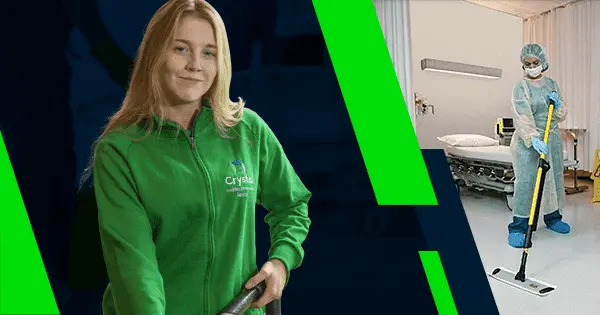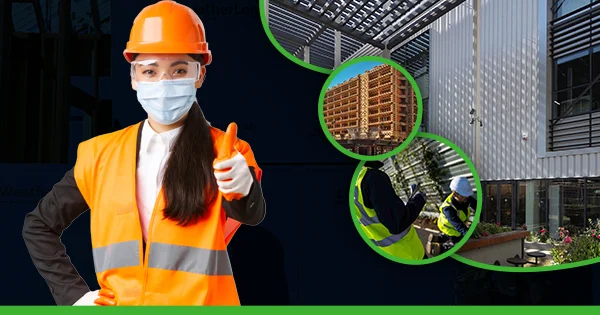Maintaining a clean and safe environment in computer labs is of utmost importance in universities. These labs are often heavily used by students and faculty members, making them prone to accumulating dust, dirt, and germs. Regular deep cleaning of computer labs not only ensures the longevity of the equipment but also promotes a healthy and productive learning environment. Deep cleaning of computer labs regularly offers numerous benefits. Firstly, it helps to prevent the buildup of dust and dirt on computer equipment, which can lead to overheating and decreased performance. By removing dust and debris from keyboards and mice, for example, students can enjoy a more comfortable and efficient computing experience. Additionally, deep cleaning helps to eliminate germs and bacteria that may be present on surfaces, reducing the risk of illness and promoting overall hygiene in the lab.
Preparing for Deep Cleaning: Gathering Supplies and Tools
Before embarking on a deep cleaning session in computer labs, it is essential to gather the necessary supplies and tools. Some of the items you will need include microfiber cloths, compressed air cans, disinfectant wipes, cleaning solution, a vacuum cleaner with attachments, a mop or steam cleaner for floors, and gloves for protection.
Using the right cleaning products and tools is crucial to ensure that you do not damage the computer equipment or leave behind residue. Microfiber cloths are ideal for wiping down screens and surfaces as they are gentle yet effective at capturing dust particles. Compressed air cans can be used to blow away dust from hard-to-reach areas such as keyboards and fans. When selecting a cleaning solution, opt for one that is specifically designed for electronics to avoid any potential damage.
Dusting and Cleaning Computer Equipment: Monitors, Keyboards, and Mice
Dusting and cleaning computer equipment should be done regularly to maintain optimal performance and hygiene. Start by turning off all the equipment and unplugging it from the power source. Use a microfiber cloth to gently wipe down the monitor screen, making sure to remove any smudges or fingerprints. Avoid using harsh chemicals or abrasive materials that can scratch the screen.
Next, focus on cleaning the keyboards and mice. Use compressed air cans to blow away any dust or debris that may have accumulated between the keys. Then, dampen a microfiber cloth with a small amount of cleaning solution and gently wipe down the keys and mouse surface. Pay attention to the crevices and corners where dirt tends to accumulate.
Clean Computer Accessories: Headsets, Speakers, and Webcams
Computer accessories such as headsets, speakers, and webcams also require regular cleaning to ensure optimal performance and hygiene. Start by disconnecting these accessories from the computer and power source. Use a microfiber cloth to wipe down the surfaces of the accessories, removing any dust or dirt.
For headsets, pay special attention to the ear cushions and microphone. If the ear cushions are removable, gently remove them and clean them separately according to the manufacturer’s instructions. For speakers, use a soft brush or compressed air can to remove any dust from the speaker grills. Wipe down the surfaces with a microfiber cloth dampened with a small amount of cleaning solution.
When cleaning webcams, use a microfiber cloth to wipe down the lens and body of the camera. Be gentle to avoid scratching the lens. If necessary, use a cotton swab dipped in a cleaning solution to remove stubborn dirt or smudges.
Clean Computer Hardware: CPU, Fans, and Power Supply Units
Cleaning computer hardware is essential for maintaining optimal performance and preventing overheating. Start by shutting down the computer and unplugging it from the power source. Open up the CPU case and use compressed air cans to blow away any dust or debris from the fans, heat sinks, and other components.
Be careful not to touch any of the components with your hands or the compressed air can nozzle, as this can cause damage. If necessary, use a soft brush to gently remove any stubborn dust. Avoid using any liquid cleaning solutions on the hardware components, as this can cause damage.
Cleaning Computer Peripherals: Printers, Scanners, and Projectors
Computer peripherals such as printers, scanners, and projectors also require regular cleaning to ensure optimal performance and longevity. Start by turning off and unplugging these peripherals from the power source. Use a microfiber cloth to wipe down the surfaces of the peripherals, removing any dust or dirt.
For printers, open up the paper tray and remove any paper or debris that may have accumulated. Use a soft brush or compressed air can to remove any dust from the printer rollers. Wipe down the surfaces with a microfiber cloth dampened with a small amount of cleaning solution.
For scanners, use a microfiber cloth to wipe down the glass surface, removing any smudges or fingerprints. Be gentle to avoid scratching the glass. If necessary, use a cotton swab dipped in a cleaning solution to remove stubborn dirt or smudges.
Cleaning Computer Furniture: Desks, Chairs, and Tables
Cleaning computer furniture is essential for maintaining a clean and comfortable learning environment in computer labs. Start by removing any items from the desks, chairs, and tables. Use a microfiber cloth dampened with a small amount of cleaning solution to wipe down the surfaces, removing any dust or dirt.
Pay special attention to areas that are frequently touched, such as armrests and keyboard trays. Use disinfectant wipes to sanitise these areas, killing any germs or bacteria that may be present. Allow the surfaces to air dry before placing any items back on them.
For chairs, use a vacuum cleaner with attachments to remove any dust or debris from the upholstery. If necessary, use a fabric cleaner to remove any stains or spills. Follow the manufacturer’s instructions for cleaning and maintenance.
Cleaning Floors and Walls: Vacuuming, Mopping, and Wiping
Cleaning the floors and walls in computer labs is crucial for maintaining a clean and safe environment. Start by removing any items from the floor, such as chairs or tables. Use a vacuum cleaner with attachments to remove any dust or debris from the floor.
For hard floors, use a mop or steam cleaner to thoroughly clean the surface. Pay special attention to areas that are frequently walked on or prone to spills. For carpeted floors, use a carpet cleaner or hire a professional cleaning service to deep clean the carpets regularly.
Wipe down the walls with a microfiber cloth dampened with a small amount of cleaning solution. Pay special attention to areas that are frequently touched, such as light switches or door handles. Use disinfectant wipes to sanitise these areas, killing any germs or bacteria that may be present.
Disinfecting and Sanitising Computer Labs: Best Practices and Products
Disinfecting and sanitising computer labs is essential for maintaining a clean and safe learning environment in universities. Start by removing any items from the surfaces that need to be disinfected or sanitised. Use disinfectant wipes or a spray disinfectant to thoroughly clean the surfaces.
Pay special attention to areas that are frequently touched, such as keyboards, mice, and door handles. Allow the surfaces to air dry before placing any items back on them. It is important to follow the manufacturer’s instructions for disinfecting products and allow sufficient contact time for effective disinfection.
When selecting disinfecting products, opt for those that are specifically designed for electronics and are safe to use on computer equipment. Avoid using bleach or other harsh chemicals that can damage the equipment or leave behind residue.
Conclusion: Maintaining a Clean and Safe Computer Lab Environment in Universities
In conclusion, deep cleaning computer labs regularly is crucial for maintaining a clean and safe learning environment in universities. By following the steps outlined in this article, you can ensure that computer equipment, accessories, hardware, peripherals, furniture, floors, walls, and surfaces are properly cleaned and maintained.
Regular deep cleaning not only promotes optimal performance and longevity of computer equipment but also reduces the risk of illness by eliminating germs and bacteria. By implementing best practices for disinfecting and sanitising, universities can create a clean and safe environment for students and faculty members to work in.
To maintain a clean and safe computer lab environment in universities, it is important to establish a regular cleaning schedule and provide training to staff members responsible for cleaning. By prioritising cleanliness and hygiene in computer labs, universities can create an environment that promotes productivity, health, and well-being.










